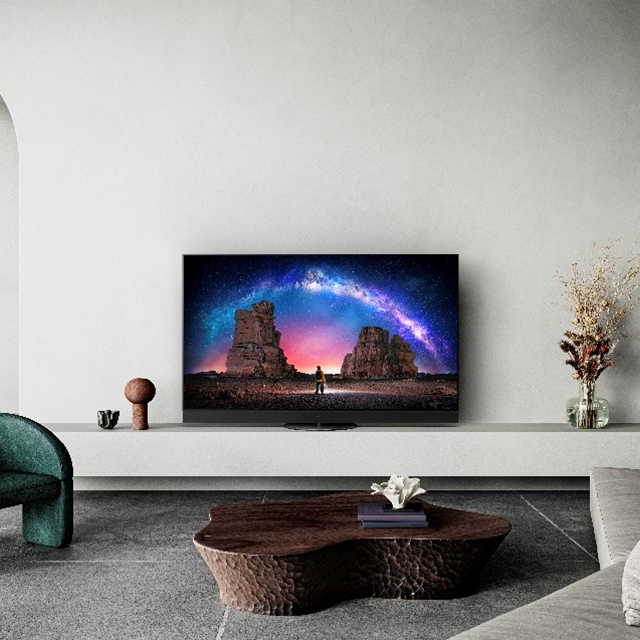What is Dolby Vision? And why will it change the way you watch TV?

When you watch a movie or TV show in Dolby Vision HDR (High Dynamic Range) on a Panasonic TV, you’ll see just what the creators intended: every subtle nuance of shade and shadow detail, exceptionally vivid colour and all the bright details your TV can muster.
Simply put, Dolby Vision is the nearest you’ll get to watching your favourite movie in a Hollywood mastering suite - and you don’t even have to leave your sofa.
So what exactly is Dolby Vision, and why should you care?
For the uninitiated, Dolby Vision is just one of a number of different HDR technologies in use today. There are so-called ‘static’ standards like HDR10 (aka plain old HDR) and HLG (as favoured by broadcasters, like the BBC), and there are ‘dynamic’ HDR standards, like Dolby Vision and HDR10+. We’ll explain the difference in a bit.
The majority of Panasonic 4k HDR TVs support all of the above...

Dolby Vision is the most popular of the dynamic HDR standards. It’s widely available, and has become a standard fixture on the top streaming services, like Netflix and Disney+. You’ll see it featured on their most popular shows, like The Queen’s Gambit, Marvel’s Hawkeye and the Star Wars spin-off, The Mandalorian.
Watching these shows in Dolby Vision is easy. They’re available from the appropriate streaming apps on Panasonic’s My Home Screen, Android and smart TV platforms. Just subscribe and stream, no extra gadgets are required.
Dolby Vision can also be found on select games for the Xbox Series X and S consoles, as well baked into many 4k UHD Blu-ray discs. To play Dolby Vision 4k discs, you’ll need a Dolby Vision compatible Blu-ray player, like the Panasonic DP-UB9000, DP-UB820 or DP-UB450.
Yes, Dolby Vision is nigh on ubiquitous. This is why you’ll find it supported on a wide range of Panasonic TVs, including the HX580, HX940, JX600, JX800, JX850, JX870 and JHX940 LED televisions, and JZ980, JZ1000, JZ1500 and JZ2000 OLED screens.
Here’s how it works: all Dolby Vision TVs receive metadata instructions delivered by Dolby Vision encoded content that helps them display the most accurate picture possible.
While Static HDR content provides a single set of instructions at the start of a programme, which provides the screen with a basic set of picture-optimising metadata. Dolby Vision’s dynamic HDR metadata system provides fresh instructions on a scene-by-scene basis.
The good news is that this wizardry is entirely automatic. You won’t have to lift a finger for it to work its magic. The only rule to follow is that Dolby Vision TVs need a Dolby Vision source, mastered in a Dolby Vision movie mastering suite. With non Dolby Vision encoded content your TV just defaults to standard HDR.
Dolby Vision is particularly useful on core-range LED TVs that don’t have the inherent brightness of their range topping stablemates. That’s because its dynamic metadata HDR technology allows less bright models to avoid the unnecessary tone-mapping of scenes which are within the native brightness of the panel. Translated, this means you’ll always see your chosen TV perform at its best with Dolby Vision content.
Dolby Vision actually comes in two iterations, regular Dolby Vision and IQ; the latter takes Dolby’s intelligent approach to HDR to another level. Using the light sensor built into the TV itself, Dolby Vision IQ not only uses dynamic metadata to intelligently display every detail of the content, but it also adjusts to match the brightness of your viewing room at the same time, so that what you’re watching never appears too dark.
Imperceptibly adjusting bright, contrast and colour, Dolby Vision IQ guarantees the best possible image quality, regardless how or when you’re viewing. It’ll maximise HDR performance whether you’re binge-watching in a brightly lit room, or watching a movie with the lights low or off.
Whether you’re shortlisting a premium screen like the JZ2000 OLED with integrated Dolby Atmos multi-speaker sound system, or looking for a stylish LED flatscreen, like the JX800, it’s easy to see why Dolby Vision compatibility has become a must-have feature for every TV buyer.






